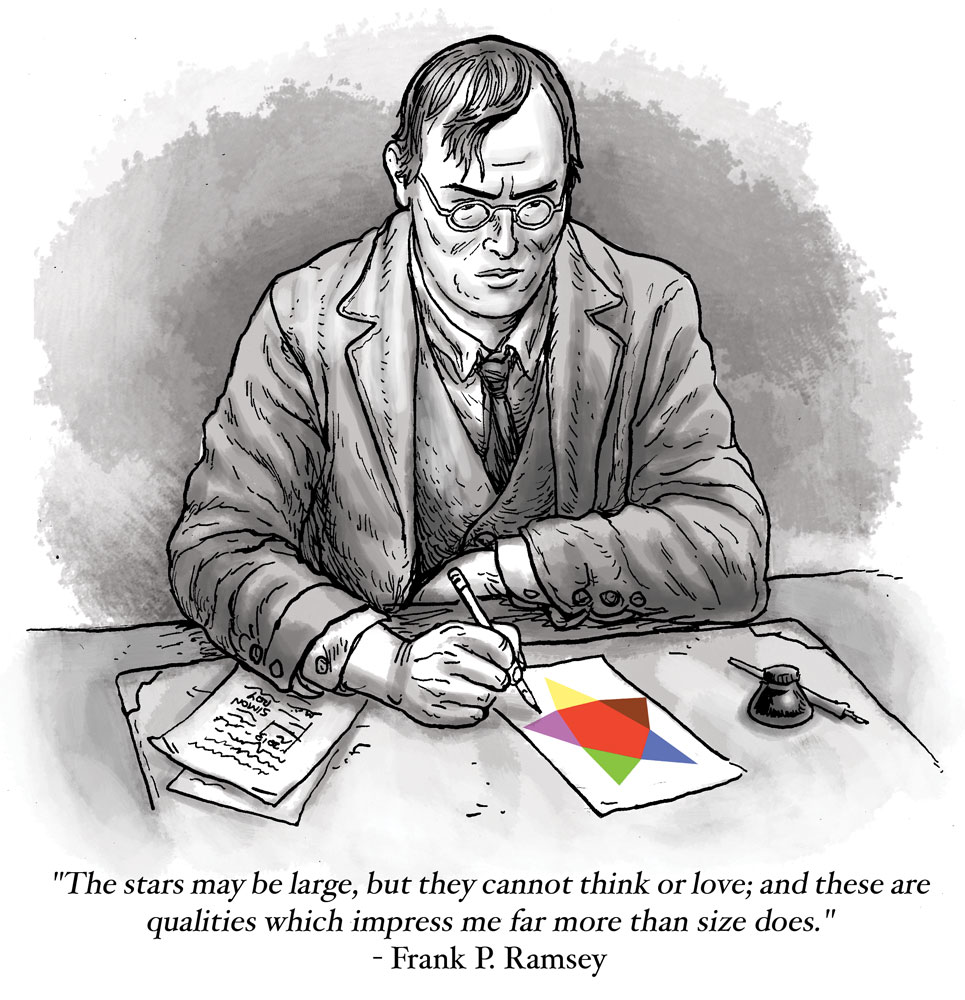Chapter 28 Graham's Number
Project by: Bianca Blackwell, Nina Djokic, Joven Sumal, Aidan Wrightand, and Juyoung Yi.
\(\textbf{Summary:}\) This project is dedicated to the life and work of Ronald Lewis Graham (1935-2020).
We explore interesting details about his upbringing, hobbies, passions, and mathematical contributions in a unique video featuring the creators of this project.
Joven Sumal, our narrator, investigated and presented Graham's biography while Bianca Blackwell and Juyoung Yi mastered the notation and derivation of Graham's number, \(G64\text{.}\) They explored the use of \(G64\) in the solution of a famous problem in Ramsey Theory involving the existence of specific subgraphs. Aidan Wright directed, filmed, and edited the video, including authentic clips of Graham and his long-time friend and collaborator Paul Erdős.
Accompanying the video is a musical composition, written and recorded by Nina Djokic, that was inspired by elements of Graham's life as well as \(G64\text{.}\)
\(\textbf{Musical analysis:}\) The basis of the composition is a parallel between Graham's up-arrow notation used in \(G64\) and applied chords in music. The number \(3\uparrow 3\) represents the expression \(3^3=3\cdot(3\cdot 3) = 27\text{.}\) Whereas \(3\uparrow\uparrow 3\) represents \(3 \uparrow (3 \uparrow 3) = 3^{3^3}\text{.}\)
The progression that was designed can be expressed using the notation \(3/3/3/3\ldots\) meaning that the \(3^\text{rd}\) chord, of the \(3^\text{rd}\) chord, of the \(3^\text{rd}\) chord\(\ldots\) was used.
The sound that results from this progression gives the feeling of constant rising upwards, almost like Graham's ever-growing number and the untouchable upper bound it represents. These chords were recorded on the piano and layered with string sounds to create fullness. An additional “boom-clap” beat can be heard in the background to create stimulation and energy.
It takes 24 chords for the progression to cycle back to the initial chord, therefore the piece was segmented into these cycles that last approximately \(1^\prime37^{\prime\prime}\text{.}\)
Each cycle features its own unique melody recorded using a lively vibraphone sound. Each melody modulates to three different keys to match the ascending chord progression. The first two melodies featured are based on the tones used in the Gregorian monophonic chant “Dies Irae”. This chant has been traditionally used in compositions since the middle ages to represent death and a transition to the afterlife, so we chose to feature it as an ode to Graham's recent passing while still maintaining a spirited and energetic atmosphere.
